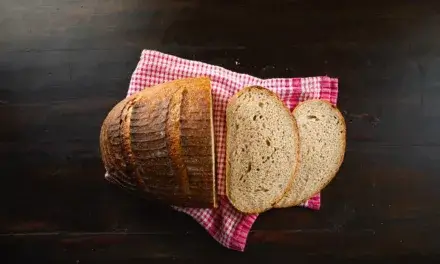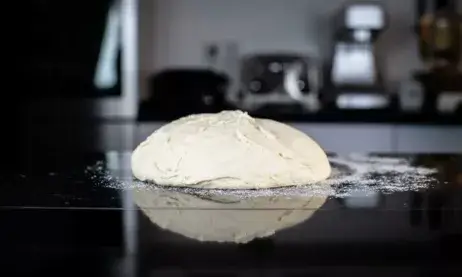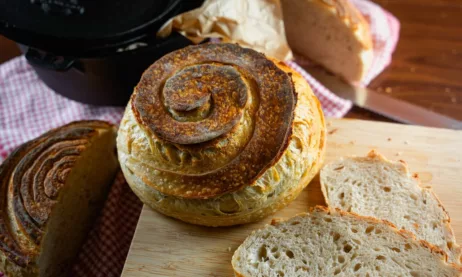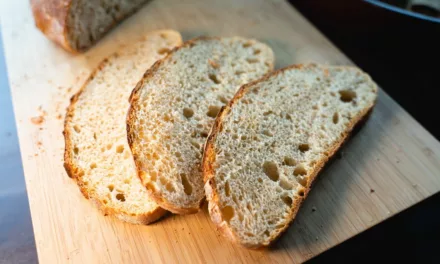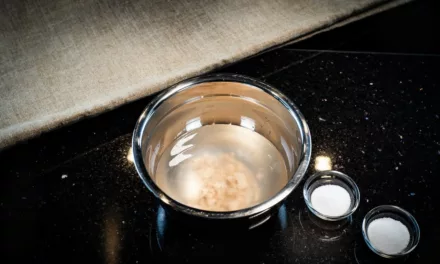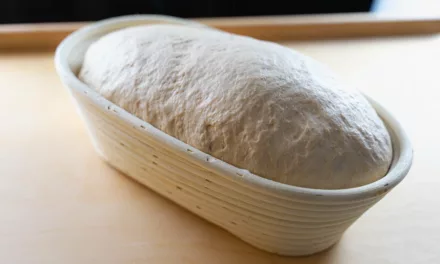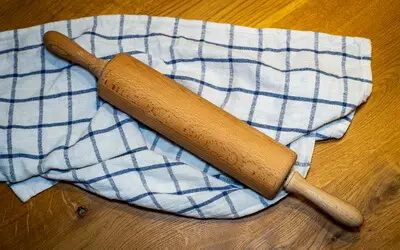Bread. It’s a staple in many diets around the world, and there’s nothing quite like the smell of a fresh loaf baking in the oven. But what do you do with the leftover bread? How do you keep it fresh and tasty for as long as possible? That’s what we’re here to explore.
Storing bread properly is an art as much as baking it. It’s about understanding the nature of bread, the factors that cause it to stale, and how to manipulate these factors to your advantage. As a seasoned baker and bread lover, I’ve spent years perfecting the art of bread storage. And now, I’m here to share my secrets with you.
So, if you’re tired of your bread going stale or moldy after just a few days, stick around. This guide is about to change your bread-storing game forever.
- Understanding Bread Staling
- Storing Bread at Room Temperature
- Refrigerating Bread for Longer Shelf Life
- Freezing Bread for Long-Term Storage
- Maintaining Your Bread Storage Equipment
- Conclusion
- Frequently Asked Questions (FAQ)
Understanding Bread Staling
Prior to delving into the specifics of bread storage methods, it’s important to understand what happens when bread goes stale. Contrary to popular belief, bread staling is not just about moisture loss. It’s actually a complex process that involves changes in the structure of the bread’s starch molecules.
When bread is fresh out of the oven, the starch molecules are soft and flexible, giving the bread its soft and fluffy texture. However, as the bread cools, these molecules begin to crystallize, causing the bread to harden and lose its freshness. This process is known as staling, and it happens even in the absence of air.
Interestingly, staling happens faster at refrigerator temperatures than at room temperature. This is why refrigerated bread often seems to go stale faster than bread stored at room temperature. However, refrigeration can help to prevent mold growth, which is a common problem when bread is stored at room temperature, especially in humid climates.
Storing Bread at Room Temperature
For short-term storage (a few days), the best place to store bread is at room temperature. A bread box, bread bag, or even a microwave (when not in use) can provide the ideal environment for your loaf. These storage methods help to protect the bread from exposure to air, while also allowing it to breathe a little, preventing condensation and mold growth.
When storing bread at room temperature, it’s important to keep it in a cool, dry place out of direct sunlight. Heat and humidity can speed up the staling process and encourage mold growth.
If you’re storing a cut loaf, place it cut-side down on a cutting board or plate. This helps to protect the interior of the bread from exposure to air, keeping it fresh for longer.
Refrigerating Bread for Longer Shelf Life
If you need to store your bread for more than a few days, refrigeration can be a good option. While it can speed up the staling process, it also slows down mold growth, giving your bread a longer shelf life.
To store bread in the fridge, wrap it in a plastic bag or foil to protect it from drying out. Remember to squeeze out as much air as possible before sealing the bag or foil.
However, keep in mind that not all types of bread are suitable for refrigeration. For example, crusty breads like baguettes and sourdough loaves can lose their crispness in the fridge. In such cases, it’s better to store the bread at room temperature or freeze it for longer storage.
Speaking of sourdough, have you ever wondered about the health benefits of this ancient bread-making technique? Or perhaps you’re interested in learning how to make your own sourdough bread at home? If so, you might find my ultimate guide to sourdough helpful. It’s packed with tips and tricks to help you unleash the baker within you.
Freezing Bread for Long-Term Storage
If you want to store your bread for more than a week, freezing is the way to go. Freezing bread effectively halts the staling process, preserving the freshness of the bread for several weeks or even months.
To freeze bread, wrap it tightly in a freezer-safe bag or foil, making sure to squeeze out as much air as possible. You can also slice the bread before freezing, allowing you to defrost individual slices as needed.
When you’re ready to eat the bread, allow it to thaw at room temperature. If you’re in a hurry, you can also defrost the bread in a toaster or oven.
If you’re interested in baking your own bread to freeze, my guide on bread making for beginners is a great place to start.
Maintaining Your Bread Storage Equipment
Just like your baking equipment, your bread storage equipment needs regular care and maintenance to function effectively. Here are a few tips to keep your bread box or bag in top shape:
- Clean regularly: Crumbs and residual moisture can attract pests and encourage mold growth. Clean your bread box or bag regularly to keep it hygienic and safe for bread storage.
- Check for damage: Over time, your bread box or bag may develop cracks or holes that can let in air and pests. Regularly check your storage equipment for any signs of damage.
- Choose the right material: Bread boxes and bags come in a variety of materials, from wood and metal to ceramic and plastic. Each material has its pros and cons, so choose one that suits your needs and preferences.
Conclusion
Storing bread properly can make a big difference in its taste and texture. Whether you’re storing it at room temperature, in the fridge, or in the freezer, the key is to protect the bread from exposure to air and moisture while also allowing it to breathe a little.
Remember, the best storage method for your bread depends on the type of bread and how long you want to store it. So, don’t be afraid to experiment and find the method that works best for you.
Frequently Asked Questions (FAQ)
What is the best way to keep bread fresh?
The best way to keep bread fresh depends on how long you want to store it. For short-term storage (a few days), storing the bread at room temperature in a bread box or bread bag is usually the best option. For longer storage, refrigeration or freezing can help to extend the shelf life of the bread.
Is it better to keep bread in the fridge or not?
It depends on the type of bread and how quickly you plan to eat it. Refrigeration can slow down mold growth, but it can also speed up the staling process. For bread that you plan to eat within a few days, room temperature storage is usually best. For longer storage, consider refrigerating or freezing the bread.
What is the best place to store bread?
The best place to store bread is in a cool, dry place out of direct sunlight. A bread box or bread bag can provide the ideal environment for storing bread at room temperature. If you’re storing the bread in the fridge or freezer, make sure to wrap it well to protect it from drying out.
How long can I keep a loaf of bread?
The shelf life of a loaf of bread depends on several factors, including the type of bread, the storage method, and the storage conditions. Generally, a loaf of bread stored at room temperature will stay fresh for 2-4 days. In the fridge, it can last for up to a week, and in the freezer, it can last for several weeks or even months.
What method to store bread in the long term?
For long-term storage, freezing is the best option. Freezing bread effectively halts the staling process, preserving the freshness of the bread for several weeks or even months. Just make sure to wrap the bread well to protect it from freezer burn.
How do you keep bread fresh for 3 weeks?
To keep bread fresh for 3 weeks, your best bet is to freeze it. Before freezing, slice the bread and wrap it tightly in a freezer-safe bag or foil. Then, when you’re ready to eat the bread, you can defrost individual slices as needed.
Does putting bread in the fridge prevent mold?
Yes, refrigerating bread can help to prevent mold growth. The cool temperature of the fridge slows down the growth of mold spores, extending the shelf life of the bread. However, refrigeration can also speed up the staling process, so it’s a bit of a trade-off.
Should you keep bread in an airtight container?
Storing bread in an airtight container can help to protect it from exposure to air, which can speed up the staling process and encourage mold growth. However, it’s also important to allow the bread to breathe a little to prevent condensation, which can also lead to mold growth. A bread box or bread bag with a little ventilation is often a good compromise.
I hope this guide has given you a better understanding of how to store bread effectively. Remember, the key to fresh, tasty bread is not just in the baking, but also in the storing. So, take the time to store your bread properly, and you’ll be rewarded with delicious, fresh-tasting bread every time.
For more insights into the wonderful world of bread, from the different types of flour to the art of kneading, check out my Types of Flour: Naming Conventions in Each Country and Kneading Bread by Hand vs. Mixer: Which is Better? articles.
Happy baking (and storing)!

